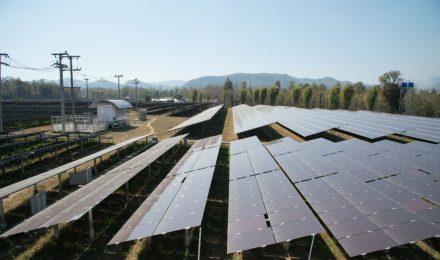Environmental justice has been a topic of concern for several decades. In many cases, marginalized communities have shouldered the burden of environmental degradation and pollution, while being denied access to the benefits of clean and renewable energy. The shift towards solar energy has the potential to change this dynamic, but only if we ensure that the benefits and burdens of this transition are distributed equitably.
The Importance of Equitable Distribution of Benefits and Burdens
Solar energy has the potential to reduce our dependence on fossil fuels and mitigate the effects of climate change. It can also create jobs, reduce energy costs, and improve health outcomes by reducing pollution. However, these benefits will only be realized if solar energy is accessible to all, regardless of income or zip code. Moreover, we must ensure that the burdens of pollution and climate change are not disproportionately borne by those who are already disadvantaged.
Achieving equitable distribution requires more than just providing access to solar energy. It requires understanding the social and economic factors that shape access to resources and opportunities. For example, low-income households may not have the financial resources to invest in solar panels or the credit history to qualify for loans. Similarly, communities of color may face additional barriers, such as discrimination in the workplace or lack of access to political power. To achieve equitable distribution, we must address these systemic barriers and work towards a more just and equitable society.
Environmental Justice and Solar Energy Statistics
The need for equitable distribution of benefits and burdens is clear when we look at the statistics. According to the National Renewable Energy Laboratory, low-income households spend a higher percentage of their income on energy than higher-income households. This means that they stand to benefit the most from reduced energy costs, but may not have the resources to invest in solar panels or other renewable energy sources. Similarly, communities of color are more likely to be exposed to pollution and suffer from the health effects of climate change. This is due in part to the fact that they are more likely to live near sources of pollution, such as highways or industrial facilities.
Fortunately, there are examples of successful efforts to promote environmental justice through solar energy. For example, the Oakland-based organization GRID Alternatives has helped low-income households and communities of color install solar panels and reduce their energy costs. In addition to providing free or reduced-cost solar installations, GRID Alternatives also provides job training and workforce development opportunities to members of these communities.
Challenges to Achieving Equitable Distribution
While success stories like GRID Alternatives show what is possible, achieving equitable distribution of benefits and burdens is not without challenges. One of the biggest challenges is the upfront cost of solar panels. While solar energy can ultimately save money on energy costs, the initial investment can be prohibitively expensive for low-income households. This is where policy solutions can play a critical role.
Another challenge is the lack of access to information and resources. Many low-income households and communities of color may not be aware of the benefits of solar energy or the resources available to them. This is where community engagement and participation can make a difference. By involving community members in the planning and implementation of solar energy projects, we can ensure that their needs and perspectives are taken into account.
Finally, there is the challenge of systemic inequality. Achieving equitable distribution of benefits and burdens requires addressing the broader social and economic factors that contribute to inequality. This includes addressing issues such as discrimination in the workplace, lack of access to political power, and unequal distribution of resources. While solar energy can play a role in addressing these issues, it is ultimately up to policymakers and society as a whole to address these underlying issues.
Policy Solutions for Promoting Equitable Distribution
Policy solutions can play an important role in promoting equitable distribution of benefits and burdens. One such solution is the use of incentives and subsidies to make solar energy more accessible to low-income households and communities of color. For example, California’s Single-Family Affordable Solar Homes (SASH) program provides incentives for low-income households to install solar panels. Similarly, the New York State Energy Research and Development Authority provides incentives for solar installations in low-income communities.
Another policy solution is the use of community solar programs. Community solar programs allow multiple households or businesses to share the benefits of a single solar installation. This can be particularly beneficial for low-income households and renters who may not have the ability to install solar panels on their own homes.
Community Engagement and Participation in Solar Energy Projects
Community engagement and participation can play an important role in promoting equitable distribution of benefits and burdens. By involving community members in the planning and implementation of solar energy projects, we can ensure that their needs and perspectives are taken into account. This can help to build trust and support for solar energy projects and ensure that they are successful over the long term.
One example of successful community engagement is the Solarize program in Portland, Oregon. The Solarize program is a grassroots effort to promote solar energy installations in specific neighborhoods. The program provides resources and support to community members who are interested in installing solar panels, including educational materials, access to financing, and support from solar installers.
The Role of Businesses in Promoting Equitable Distribution
Businesses can also play an important role in promoting equitable distribution of benefits and burdens. One way businesses can do this is by investing in solar energy projects in low-income communities or communities of color. This can help to create jobs and economic opportunity in these communities, while also providing access to clean and renewable energy.
Another way businesses can promote equitable distribution is by implementing sustainable practices in their own operations. This can include installing solar panels on their own buildings, reducing energy use, and minimizing waste. By leading by example, businesses can help create a culture of sustainability and promote the use of clean and renewable energy.
Future of Environmental Justice and Solar Energy
The future of environmental justice and solar energy is bright, but there is still much work to be done. Achieving equitable distribution of benefits and burdens will require ongoing commitment and action from policymakers, community members, and businesses. By championing environmental justice and promoting solar energy as a tool for community empowerment, we can build a more sustainable and equitable future for all.
While solar energy has the potential to mitigate the effects of climate change and reduce dependence on fossil fuels, it requires more than just access to solar panels in order to achieve equitable distribution of benefits and burdens. Solar energy must also be implemented in a way that is equitable and sustainable for low-income households and communities of color.
To promote equitable distribution of benefits and burdens, organizations such as GRID Alternatives and organizations like the Oakland-based organization GRID Alternatives have helped low-income households and communities of color install solar panels and reduce their energy costs. In addition to providing free or reduced-cost solar installations, GRID also provides job training and workforce development opportunities to members of these communities.



